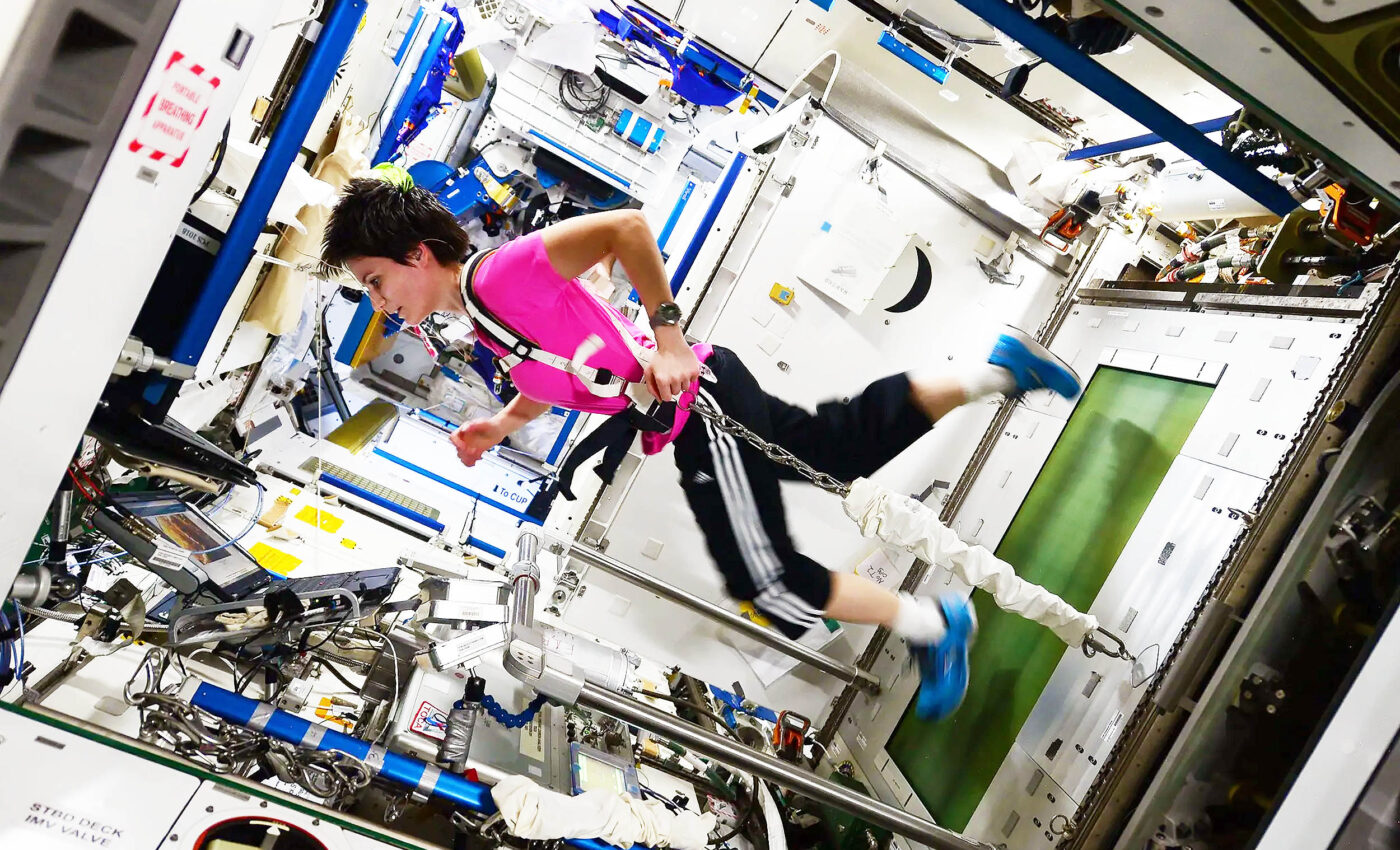
How astronauts exercise to stay fit and healthy in space
Space, the final frontier…for human exercise and fitness? That might not be the catchphrase you’re used to, but it’s increasingly relevant as astronauts set sights on the Moon, Mars, and beyond.
A pressing question hangs in the air (or rather, the vacuum of space): How do we keep astronauts healthy and strong in the face of microgravity’s bone and muscle-weakening effects?
Thankfully, the International Space Station (ISS) has become a unique laboratory for research in this area. And what they’re learning isn’t just helping astronauts; it could revolutionize how we approach fitness right here on Earth.
Why astronauts need to exercise
Before we strap on our space boots and hit the cosmic gym, let’s understand the challenge. On Earth, gravity constantly provides resistance, keeping our bones and muscles strong.
But in space, that resistance vanishes. The result? Bones become brittle, muscles atrophy, and astronauts risk returning to Earth weaker than when they left.
The solution is exercise, but not the usual jog around the block. In space, exercise equipment has advanced from simple elastic bands to sophisticated machines that simulate weightlifting and cardio in a weightless environment.
ARED: Space station’s weightlifting wonder
One such marvel is the Advanced Resistive Exercise Device (ARED), the ISS’s very own weight room. Using a clever piston and flywheel system, ARED simulates the resistance of lifting weights on Earth.
And the benefits are clear. Research shows that preflight training with ARED improves astronauts’ performance in space, similar to how athletes train for competition.
Results have shown that preflight exercise training improves an individual’s performance while on the space station just as pre-season training helps athletes in later competition.
CEVIS: Pedaling astronaut exercise
Next, we have CEVIS, the Cycle Ergometer with Vibration Isolation and Stabilization System. This high-tech stationary bike uses friction and resistance to provide astronauts with a challenging cardio workout. It’s like a Peloton for the cosmos.
However, data from CEVIS has also raised several questions. It suggests that even with current exercise countermeasures, up to 17% of astronauts could still experience muscle, bone, and heart health issues on future missions.
The researchers note that this highlights the need to further refine current regimens, add other interventions, or enhance conditioning preflight.
This revelation emphasizes the ongoing need for innovation and improvement in astronaut fitness regimes.
Sprint: High-intensity revolution
In the early days of space exploration, astronauts spent hours each week on low-intensity exercise, with disappointing results.
Despite spending up to 10 hours per week exercising, astronauts continued to lose muscle mass and bone density.
Then came a game-changer: the Integrated Resistance and Aerobic Training Study (Sprint). This study showed that short, high-intensity workouts were just as effective as longer, low-intensity ones.
The bonus? Less wear and tear on the equipment and more time for astronauts to focus on their mission.
Measuring the microgravity impact
To understand the true impact of space on the body, scientists have delved into the molecular level. The VO2max investigation revealed that long-duration spaceflight significantly decreases astronauts’ aerobic capacity.
These results have important implications for future long-duration space missions, adding to the evidence that current countermeasures may not be adequate.
Meanwhile, the Muscle Biopsy study identified a potential biomarker for muscle health. The findings suggest that current exercise protocols are effective in preventing muscle de-conditioning.
They also support improvements in countermeasures to protect crew health and performance on future deep space exploration missions.
Future of astronaut exercise
As we plan for longer missions to the Moon and Mars, astronaut fitness remains a top priority. Research continues to refine the ideal combination of diet, exercise, and medication to keep astronauts healthy in space and upon their return to Earth.
While current exercise programs appear to moderate changes in musculoskeletal systems, individual results vary.
In addition, current regimens cannot directly transfer to longer exploration missions due to space constraints, environmental issues such as removal of heat and moisture, device maintenance and repair needs, and the challenges of finding time for exercise and avoiding interference with the work of other crew members.
But the benefits extend beyond the cosmos. The lessons learned from astronaut fitness research could help people on Earth who suffer from bone and muscle loss due to aging, illness, or sedentary lifestyles.
Space fitness is Earth fitness
So, while astronauts are pushing the boundaries of human fitness in the extreme environment of space, their efforts are benefiting us all.
The next time you hit the gym, remember that the exercises you’re doing might have been inspired by research conducted hundreds of miles above your head.
Whether you’re an astronaut preparing for a mission to Mars or a couch potato looking to get in shape, the message is clear: Exercise is essential for maintaining a healthy body, no matter where you are in the universe.
—–
Like what you read? Subscribe to our newsletter for engaging articles, exclusive content, and the latest updates.
Check us out on EarthSnap, a free app brought to you by Eric Ralls and Earth.com.
—–













